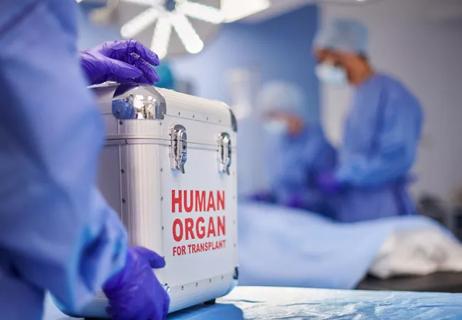What new allocation systems mean for your patients

The Organ Procurement and Transplantation Network (OPTN)/United Network for Organ Sharing (UNOS) introduced a new kidney allocation system in December 2014, changing how U.S. transplant candidates are matched with donor kidneys. In February 2015, OPTN introduced additional changes for allocation of donor lungs in the U.S.
Advertisement
Cleveland Clinic is a non-profit academic medical center. Advertising on our site helps support our mission. We do not endorse non-Cleveland Clinic products or services. Policy
Based on years of review and collaboration by transplant professionals, these changes are designed to better serve all patients on transplant waiting lists, from the healthiest to the highest risk.
Here’s what Cleveland Clinic kidney and lung transplant experts say providers need to know about the changes.
“We’ve moved from a first-come, first-served system to one based on longevity matching — meaning patients who are likely to live the longest will get kidneys expected to last the longest,” says David Goldfarb, MD, Surgical Director of Cleveland Clinic’s Renal Transplantation Program.
Now there are two calculations that determine matches:
Factoring in a patient’s time on dialysis is a major change. Previously, a patient’s wait time began when he or she joined the transplant wait list. Now, wait time is retroactive to when a patient began dialysis — even if he or she didn’t join the wait list until later. This helps even the playing field for patients who may have been unaware of their transplant options before or weren’t able to have a transplant evaluation for other reasons.
Advertisement
Donor kidneys with lower KDPI scores will be offered first to patients with lower EPTS scores. Higher KDPI kidneys will be offered to a wider range of people who may prefer to have a transplant sooner rather than wait for a lower KDPI kidney.
“These changes are intended to maximize utility of our limited supply of donor kidneys,” says Dr. Goldfarb.
More than 100,000 people wait for kidney transplants each year, he says. That number continues to rise. But the number of kidney transplants, from both deceased and living donors, is consistently about 17,000 per year.
About 10 to 20 percent of transplant recipients end up outliving their donor kidney and needing a repeat transplant. The new allocation system is designed to increase graft years and reduce the number of repeat transplants (thereby reducing the number of people on the wait list).
“Under the former system, it was possible for a 70-year-old patient to receive a 20-year-old kidney,” says Dr. Goldfarb. “The new system attempts to reconcile that, better matching patient and kidney longevity.”
“KDPI and EPTS scores do not necessarily predict outcome,” cautions Dr. Goldfarb. “They’re just a marker of durability. Older patients may be matched with higher KDPI kidneys, which may be a good fit for them. Faster availability can be more important than lower KDPI.”
The formula for calculating patients’ lung allocation scores (LAS) has been revamped to better fit the current population of people on the wait list.
The LAS rates a patient’s likelihood of benefiting from a lung transplant on a scale of 0 to 100. The higher the score, the higher the benefit and the more access a patient will have to donor lungs. LAS is calculated based on numerous variables, including:
Advertisement
The February 2015 revisions to the statistical models used to calculate LAS were changed to:
The LAS system was introduced in 2005, when many of the sickest lung patients weren’t included on the wait list.
“Before 2005, we didn’t list people who wouldn’t survive the long, first-come-first-served wait for a transplant,” explains Maryam Valapour, MD, MPP, Director of Lung Transplant Outcomes at Cleveland Clinic. “The introduction of LAS changed everything. It allowed us to begin prioritizing patients by their risk of dying on the wait list and likelihood of survival post-transplant.”
As a result, patients with more aggressive pulmonary conditions began to be added to the lung transplant wait list.
“The OPTN and the Scientific Registry of Transplant Recipients (SRTR) reviewed the LAS system annually and made some incremental changes, but this is the first major overhaul in 10 years,” says Dr. Valapour, who is a senior investigator for the SRTR. “We now have indicators that more accurately reflect today’s transplant candidates.”
“Most people on the wait list will not notice a change due to the revised LAS,” says Dr. Valapour. “The most dramatic change will affect those with pulmonary hypertension and other pulmonary vascular diseases. That’s who will see increased access to transplants.”
According to UNOS, changes to both kidney and lung allocation systems should help improve transplant access for some of the highest-risk patients without significantly compromising wait times for others.
Advertisement
Advertisement

Cleveland Clinic pulmonologists aim to further lower waitlist times and patient mortality

New research aims to improve suboptimal lung transplant outcomes by “looking beyond the walls of hospitals”

Data indicates transplant outcome disparities exist, but thoughtful planning is needed to address the problem

Counseling before and after transplantation can help patients navigate the balance between safety and practicality

Multisystem diseases require multi-disciplinary approach for the best care

Criteria reflect a rethinking of some contraindications

Mobile app designed to improve access to lung transplant and reduce waitlist mortality

New risk-modeling approach to use microsimulations, incorporating day-to-day changes in patients